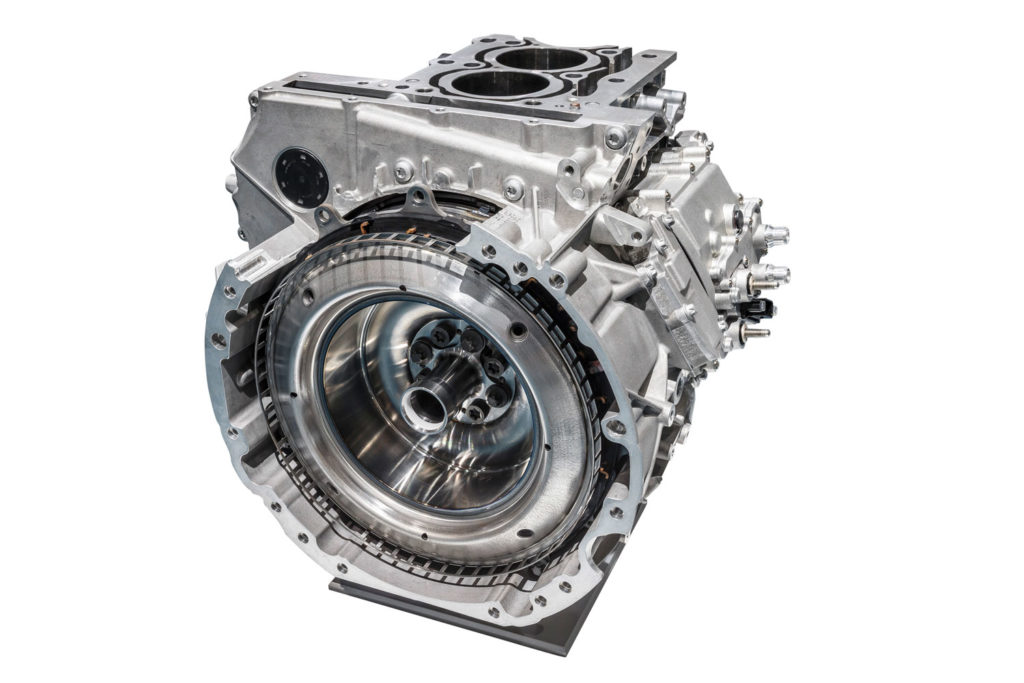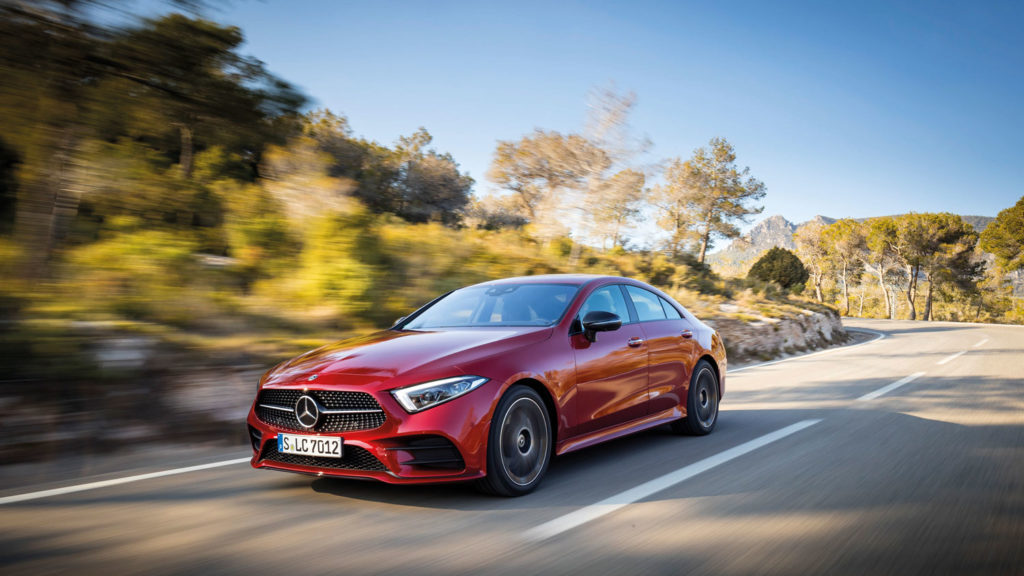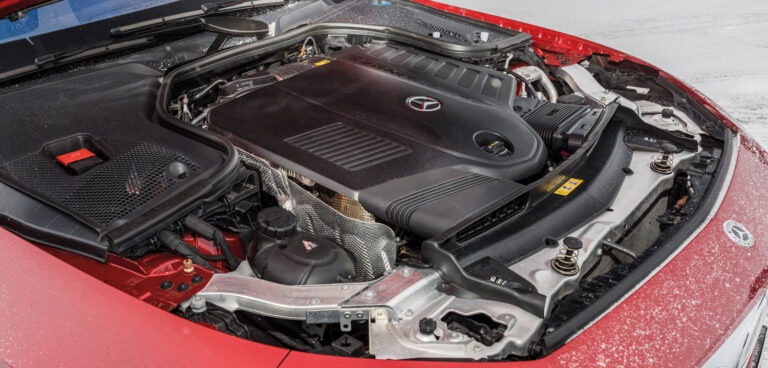There’s a lot of pressure on the Mercedes-Benz CLS. When going up against the likes of the Audi A7 and Porsche Panamera there always will be, but pair that with the engineering burden of being of the first applications to feature M-B’s EQ Boost mild-hybrid technology and that weight of expectation soon becomes real.
The lovely looking (and it really is a beautiful, stylish car when you think it’s ‘only’ an exec sedan) CLS 450 features a newly developed 3.0 six-cylinder twin-turbo gasoline engine, a 48V integrated starter-generator (ISG) and a lithium-ion battery. The ISG, which is placed been the IC unit and the 9-speed automatic transmission acts as both a starter motor and a hybrid assist motor, while also enabling kinetic energy recuperation.
From a power performance perspective, this means that the 2,999cc in-line six delivers 372ps and 500Nm torque – a good offering for a car of this size. But there’s more: the EQ systems chips in an additional 22ps and 250Nm, meaning that the CLS 450 is quick – 0-62mph in 4.8 seconds quick. Top speed is capped at 155mph (250km/h).
Mercedes argues that the EQ Boost system in the CLS – which shares much technology with the S-Class – makes fuel savings possible that were previously the exclusive domain of high-voltage hybrid technology. And while that works on paper, during our time with the 450 we couldn’t achieve the claimed 36.2mpg combined fuel consumption rating. Emissions out, however, are at an impressive 184g/km CO₂.
Perhaps the most telling thing about this powertrain is that 90% of the time most wouldn’t even realize that the 48V system is there. The IC motor and ISG combine seamlessly. Even when the CLS is sailing in eco mode, there isn’t an audible change in the engine note. EQ Boost just quietly goes about its business, giving a power nudge to the CLS 450 when needed.





